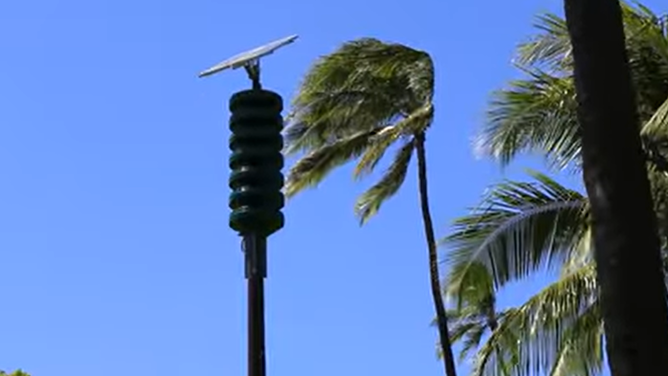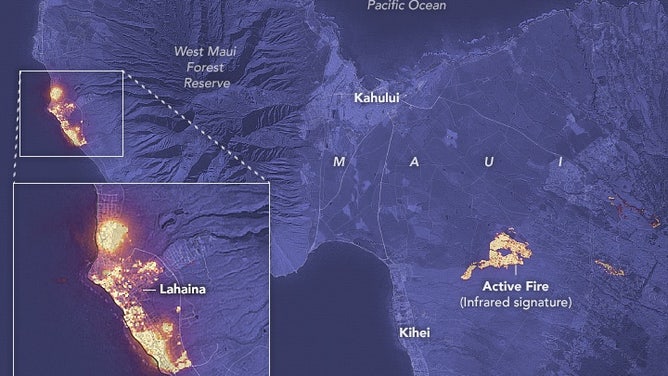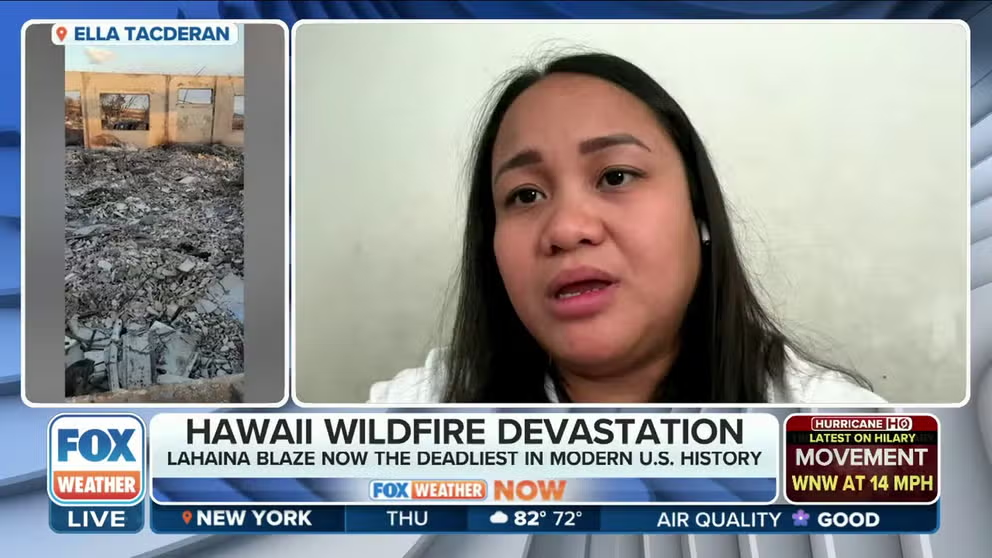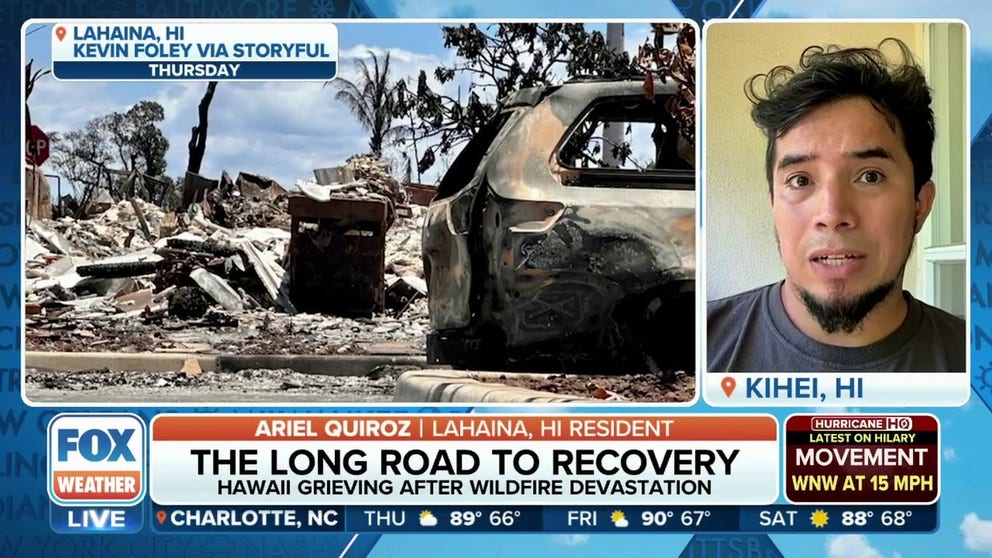World’s largest siren warning system stayed silent during deadly Hawaiian fires
Wind-driven brush fires in Maui damaged or destroyed at least 2,000 structures, with authorities reporting between 100 and 200 deaths.
Lahaina resident loses family home in Hawaii wildfires
Ella Tacderan spoke to FOX Weather about her father and grandmother barely escaping the Lahaina wildfires, and how they lost a home that's been in their family for generations. August 16, 2023.
KAHULUI, Hawaii – As Hawaii grapples with its worst disaster in its over 60-year history, locals are questioning whether more could have been done to mitigate the loss of life in the country’s deadliest brush fire in modern history.
Raging fires on August 8 were spread by gusty winds that authorities said killed more than 100 people on the island of Maui.
Leaders who toured the devastation in Lahaina said the aftermath looked like a bomb went off in a town that is home to more than 12,000 people.
Hawaii’s governor described the fires as "difficult to anticipate" but also said the islands were having to deal with a lack of resources and personnel in the lead-up to the flames.
BEFORE-AND-AFTER SATELLITE IMAGES OF MAUI AFTER DEADLY WIND-DRIVEN BRUSH FIRES
Despite the National Weather Service office in Honolulu issuing Fire Weather Warnings for the islands in the run-up to the event, emergency management did not use all the tools at its disposal to warn residents of the unfolding disaster on the day of the fires.
According to county officials, outdoor warning sirens were not used for the fires, and cell phone alerts may not have been received due to poor service, hampered by the ongoing event.
In fact, communications between first responders were even difficult, Maui's Fire Chief Bradford Ventura stated.
"The fire that day moved so quickly that communications back to those who make the notifications were physically and nearly impossible," Ventura stated in the days after the event. "What we experienced was such a fast-moving fire through the neighborhood that the initial neighborhood that caught fire, they were basically self-evacuating, with fairly little notice."
Lahaina resident recalls how his family fled the Hawaii wildfires
Ariel Quiroz shared his story about how he escaped the wildfires with his two cats and how the community of Lahaina is struggling to rebuild. August 16, 2023.
‘I CAN’T BREATHE:’ HAWAII FIRE SURVIVOR MAKES EMOTIONAL RETURN TO CHARRED REMAINS OF HOME
All-hazard siren system is in place for disasters but is rarely used during threats
The state boasts having the "largest single integrated public safety outdoor siren warning system in the world," with at least 80 sirens on Maui, but in recent memory, alarms have only been used during tsunami threats and monthly testing.
According to emergency management, the system is not solely devoted to tsunami threats and can be used during hurricanes, dam breaches, flooding, volcanic eruptions, terrorist threats, hazardous material incidents and even wildfires.
It is unclear if Maui County officials even discussed triggering the sirens on the day the fires raged, with at least one official, Mayor Richard Bissen, saying he wasn’t in Lahaina to know if they were set off or not. The answer, according to locals and state officials, is that they were never used.

Siren in place on Hawaii.
(Hawaii Emergency Management)
The governor’s office said the state’s attorney general review of the entire disaster would involve whether the employment of additional emergency alerts was needed in the run-up to the response.
"The Department of the Attorney General shares the grief felt by all in Hawaiʻi, and our hearts go out to everyone affected by this tragedy," Attorney General Lopez said in a statement. "My Department is committed to understanding the decisions that were made before and during the wildfires and to sharing with the public the results of this review. As we continue to support all aspects of the ongoing relief effort, now is the time to begin this process of understanding."
Maui County emergency operations head doesn’t regret not using sirens
Frustrations continue to mount as the chief of Maui’s emergency operations addressed concerns a week after the disaster over whether he was qualified to be the head of the agency.
"I went through a very arduous process. I was vetted, and I had to take a civil service examine. I was interviewed by seasoned emergency managers, and they all deemed me qualified, in fact, I was selected, "said Herman Andaya.
Andaya was named the administrator of the Maui Emergency Management Agency in 2017 but didn’t have an extensive background in disaster response when selected.
Andaya said he did not give the order to sound sirens as he thought people would have sought higher ground and gone towards the flames, instead of to the ocean.
It is unclear how much access the administrator had to real-time information during the disaster, as Andaya said he was not on the island during the beginning stages of the event.
Less than 24 hours after the news conference, Andaya resigned citing health reasons.
"Given the gravity of the crisis we are facing, my team and I will be placing someone in this key position as quickly as possible, and I look forward to making that announcement soon," said Bissen.

Infrared signatures of active fires on August 8
(NASA)

